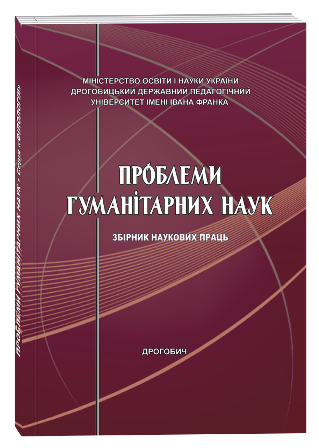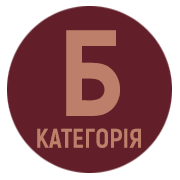THE USE OF THE COLOUR NAME BLAU IN GERMAN MEDIA DISCOURSE AND PECULIARITIES OF ITS TRANSLATION
DOI:
https://doi.org/10.24919/2522-4565.2023.55.1Keywords:
colour name blau, coloronym, media text, metaphor phraseologism, ways of translationAbstract
This article explores the use of colour as a semantic and stylistic layer of vocabulary in media texts. The use of colloquialisms is an essential component of a linguistic expression that not only defines the qualities of objects by their colour but also provides them with additional emotional, symbolic, and conceptual nuances. The article primarily focuses on expressions that use the colour blue and delves into the lexical meaning and origin of the adjective “blau” in German and its symbolism in various fields, including psychology, religion, art, literature, and linguistic and cultural studies. The colour blue reveals ambiguous semantics ranging from positive associations with calmness, protection, peace, and romanticism to highly negative associations with deception and lies, sadness and depression, and even brutal violence. The language of journalism is rich in imagery and metaphors, leading to a frequent use of phraseology. This article concentrates on analysing German phraseological units with colour names often present in the media, highlighting their importance in understanding the nuances of language and culture. The study analyses the established compounds with the colour name Blau contained in phraseological dictionaries, their semantics, linguistic and cultural features, and new expressions derived from these phraseological units and occur in media texts. It is established that the metaphoric meanings of colour nominations undergo new changes in semantics, lexical compatibility, and expressive and evaluative colouring in the media context, and that meaning is constantly developing. The metaphorical semantics of certain traditional expressions often acquire new meanings due to the emergence of new events and phenomena. Not all expressions with the’ blau’ component in media texts nowadays are inherently German. The German language has many borrowings from other languages, predominantly English. The article delves into the methods of their translation by means of the German language. As a rule, these include loan translation, the traditional translation of the expression, and, recently, foreign language inclusion, which has been gaining popularity. The study elaborates on the structure of the colour names with the element blau expressions, their semantics, borrowing time, readership, and sphere of usage. It reveals a rich diversity of how colour names with the ‘blau’ component are rendered, adding another layer of complexity to the study of language borrowings.
References
Енциклопедичний словник символів культури України /за заг. ред. В. П. Коцура, О. І. Потапенка, В. В. Куйбіди. 5-е вид. Корсунь-Шевченківський, 2015. 912 с.
Гаврись В. І., Пророченко О. П. Німецько-український фразеологічний словник: У 2 т. Київ. Т. 1 : А–К. 1981. 416 с., Т. 2 : L–Z. 1981. 382 с.
Жайворонок В. В. Антологія знаків української етнокультури : словник-довідник. Київ : Наукова думка, 2018. 760 с.
Іншаков А. Теоретичні засади дослідження колірної лексики в мовознавстві. Філологічні студії. Науковий вісник КНУ : зб. наук. праць / за ред. Ж. В. Колоїз. Кривий Ріг, 2013. Вип. 9. С. 188–195.
Кантемір С. О. Синтагматичні та парадигматичні властивості прикметників кольору в німецькій мові : автореф. дис. … канд. філол. наук :10.02.04. «Германські мови». Одеса, 2003. 22 с.
Ковальська І. В. Колористика як перекладознавча проблема : автореф. дис. ... канд. філол. наук : 10.02.16 «Перекладознавство». Київ, 2001. 16 с.
Ковбасюк Л. А. Семантичний та функціональний аспекти одиниць вторинної номінації з компонентом «кольороназва» в сучасній німецькій мові: дис. … канд. філол. наук : 10.02.04. Херсон, 2004. 214 с.
Критенко А. П. Семантична структура назв кольорів в українській мові. Славістичний збірник. Київ : Вид-во Академії наук УРСР, 1963. С. 97–111.
Люшер М. А. Магия цвета. Харків : Світовид, 1996. 232 с.
Мельник В. І. Качан О. Ю. Кольороназви «жовтий» та «синій» у семантиці фразеологічної одиниці в англійській та французькій мовах. Studia philologica. 2012. Вип. 1. С. 120–123. URL : http://nbuv.gov.ua/UJRN/stfil_2012_1_25.
Нелюбова М. В. Психологія кольору (Авторський курс лекцій). URL : http://www.videoton.ru/Articles/pshiho_color.html.
Потебня О. О. Естетика і поетика слова. Збірник / Упоряд., вступ, ст., приміт. І. В. Іваньо, А. І. Колодної. Київ : Мистецтво, 1985. 302 с.
Яворська Г. М. Мовні концепти кольору (до проблеми категоризації). Мовознавство. 1999. № 2–3. С. 43–50.
Berlin B., Kay P. Basic color terms: their universality and evolution. Berkeley and Los Angeles : The University of California Press, 1969. 178 p. Cambridge Dictionaries Online. URL : http://dictionary.cambridge.org/dictionary/british/symbol.
Cambridge Dictionaries Online. URL: http://dictionary.cambridge.org/dictionary/british/symbol. Duden : Redewendungen und sprichwörtliche Redensarten. Wörterbuch der deutschen Idiomatik / Bearb. von Günter Drosdowski. Werner Scholze-Stubenrecht. Mannheim, Leipzig, Zürich : Dudenverlag, 1992. 864 S.
Duden. Das große Wörterbuch der deutschen Sprache in 10 Bänden. Mannheim, Leipzig, Wien, Zürich, Dudenverlag. B. 3. 1999. 464 S.
Fleischer W. Phraseologie der deutschen Gegenwartssprache. 2., durchges.und erg. Aufl. Tübingen : Niemeyer, 1997. 357 S.
Goethe J. W. von. Zur Farbenlehre. Tübingen : J.G. Cotta, 1810.
Ludwig K.-D. Zur begrifflichen und sogenannten nichtbegrifflichen Komponente der Wortbedeutung. DaF. 1978. № 5. S. 257–261.
Schopenhauer A. On Vision and Colors / Translated by E. F. J. Payne, Edited with an Introduction by David E. Cartwright. Berg Publishers, Inc., 1994. 168 p.
Weisgerber L. Die Zusammenhänge zwischen Muttersprache, Denken und Handeln. Zeitschrift für deutsche Bildung. Frankfurt/M. 1930. Heft 6. S. 57–72 und 113–126.
Wierzbicka A. The Meaning of Colour Terms : Semantics, Culture, and Cognition. Cognitive Linguistics. 1990. № 1. P. 99–150.
Wittmers E. Probleme der Textlinguistik. Studia Grammatica II. Berlin : Akademie-Verlag. 1981. № 6. S. 766–768.



